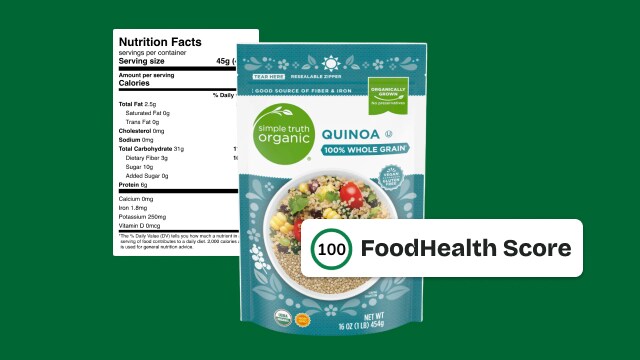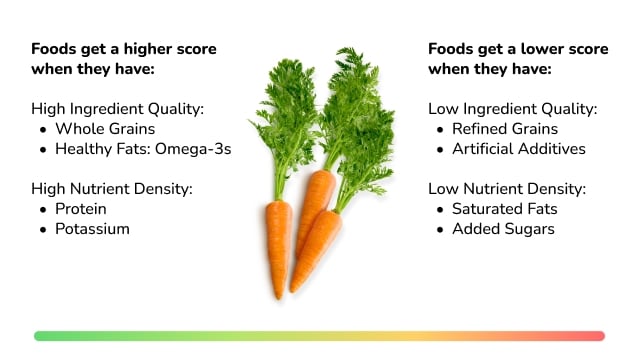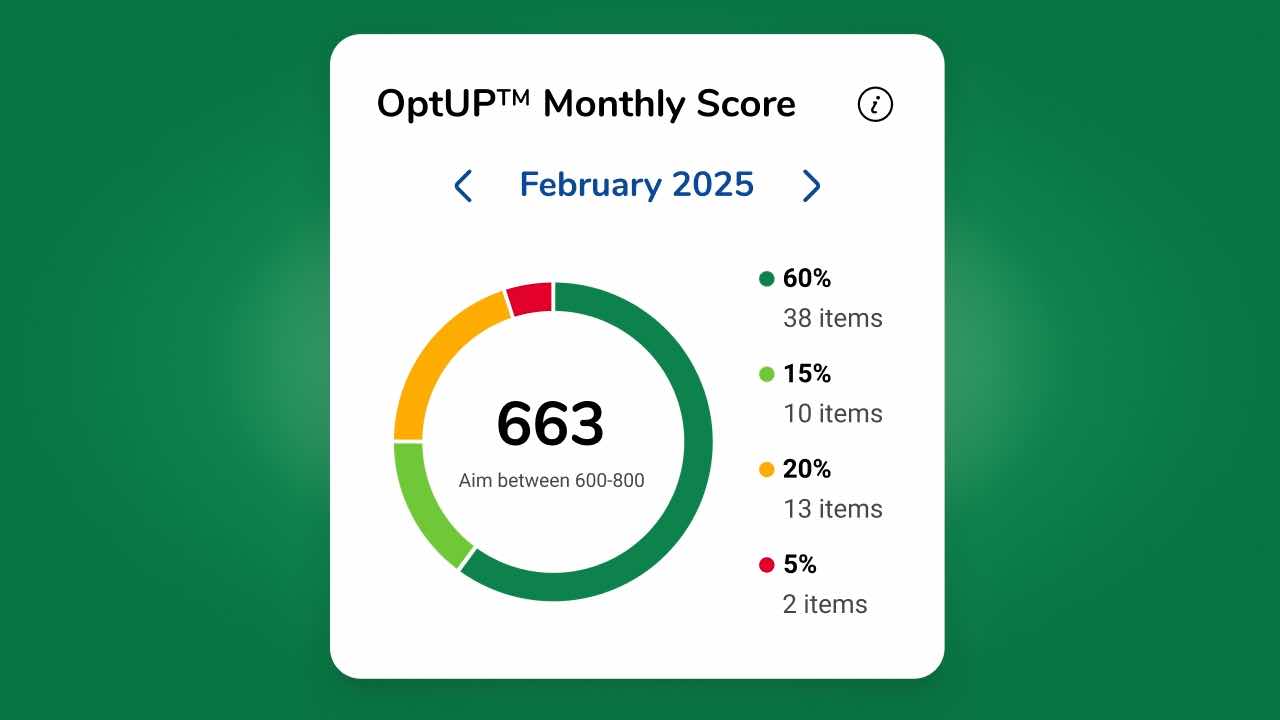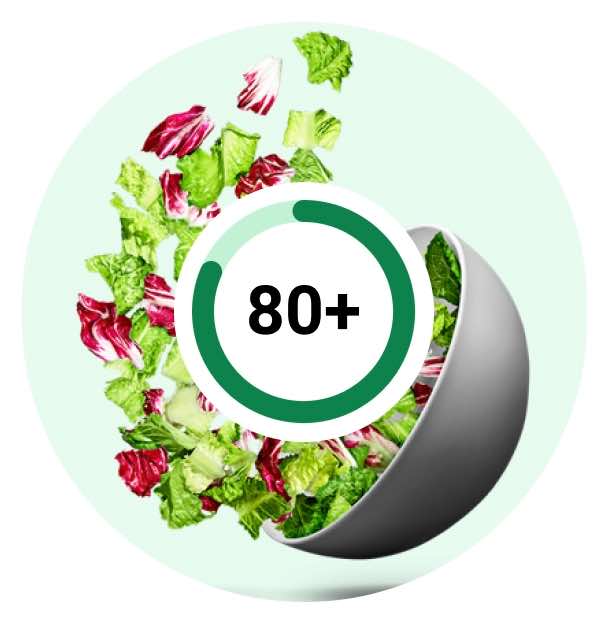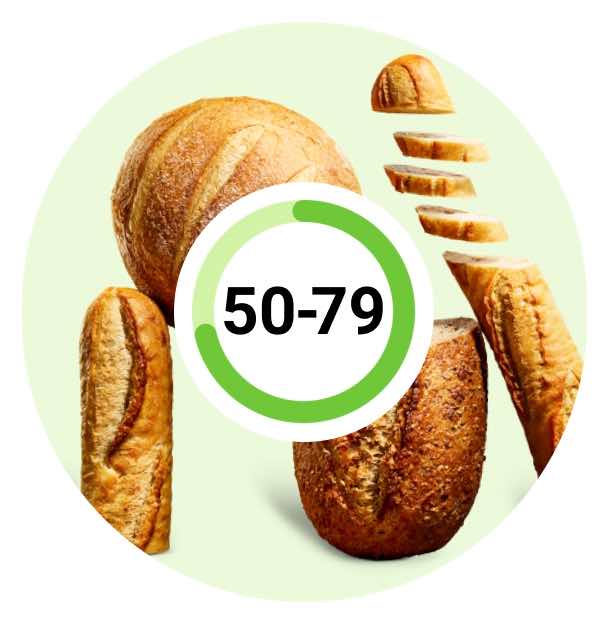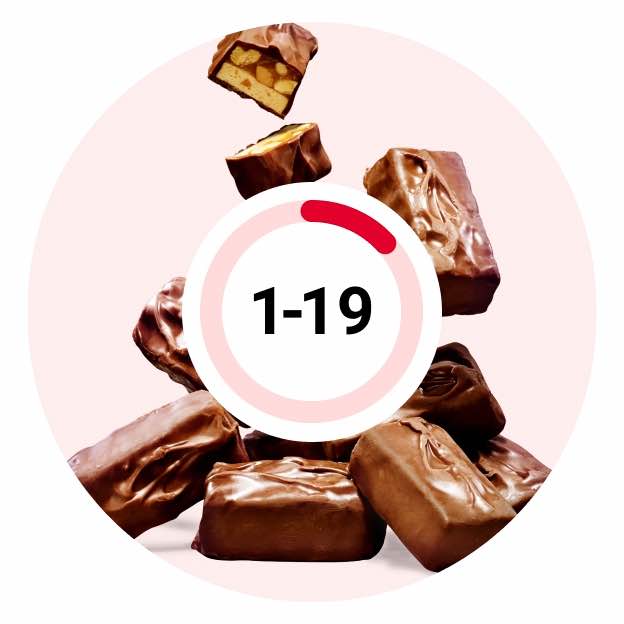We believe that eating healthy should be simple—that’s why we created the OptUP™ Program to help make informed grocery shopping easier. Our goal is to simplify the process of choosing nutritious options, starting with a better understanding of what’s in your cart today. Our registered dietitians, who are experts in evidence-based nutrition science (and total foodies themselves), bring their knowledge straight to your fingertips with the OptUP™ Program, making it easier to eat well and feel great.
We’ve partnered with bitewell to introduce the FoodHealth Score, a simple rating system that scores foods from 1-100, offering a quick snapshot of their nutritional value. Choosing items with a higher FoodHealth Score will boost your overall OptUP™ Program Score. It’s an easy way to shop healthier, on your terms.
FoodHealth Score
Developed by bitewell's team of registered dietitians and data scientists, the FoodHealth Score rates items from 1 to 100. The higher the score, the more nutritious the food. To find the FoodHealth Score while shopping, simply check the product page online. It’s a quick and easy way to spot healthy options without having to read every label!
How is Food Scored?
The FoodHealth Score analyzes a food's ingredients and nutrition facts to calculate a score. The score is based on two primary factors:
Ingredient Quality – The type and quality of ingredients used in the food.
Nutrient Density – The amount of beneficial nutrients, like fiber and protein, relative to the calories.
OptUP™ Favorites
OptUP™ Score
The FoodHealth Scores from your recent purchases are used to calculate your OptUP™ score. You can use your OptUP™ score to better understand the nutritional value of your purchases while tracking them over time. Simply use your Shopper’s Card when buying groceries at one of the Kroger Family of Companies then visit Nutrition Insights to analyze your purchases. Unlike other tools that help you track progress, there’s no tedious logging of food required.
Aim for an OptUP™ Score above 600
Green (Items Scored Between 80-100):
Load up on these foods.
They tend to be higher in protein, fiber, healthy fats, and may include fruits, vegetables, nuts, or whole grains.
Our dietitians recommend filling your cart with dark green foods and eating them at every meal.
Light Green (Items Scored Between 50-79):
A great choice.
These foods offer a balance of nutrients like fiber, protein, and whole grains while being moderate in saturated fat, sodium, and sugar.
A significant portion of your cart should be light green foods and we recommend you eat these foods daily.
Yellow (Items Scored Between 20-49):
These foods fall somewhere in the middle.
They have less nutritional value compared to green foods in the same category, often due to lower amounts of positive nutrients.
Fill a moderate portion of your cart with yellow foods and strive to enjoy these foods a few times per week.
Red (Items Scored Between 1-19):
Enjoy these foods mindfully and in smaller portions.
These foods tend to have the lowest nutritional value and may have more saturated fat, sodium, and added sugar.
Add these foods to your cart for special occasions and enjoy them in moderation, as all foods can fit into a balanced diet.
Green (Items Scored Between 80-100):
Load up on these foods.
They tend to be higher in protein, fiber, healthy fats, and may include fruits, vegetables, nuts, or whole grains.
Our dietitians recommend filling your cart with dark green foods and eating them at every meal.
Light Green (Items Scored Between 50-79):
A great choice.
These foods offer a balance of nutrients like fiber, protein, and whole grains while being moderate in saturated fat, sodium, and sugar.
A significant portion of your cart should be light green foods and we recommend you eat these foods daily.
Yellow (Items Scored Between 20-49):
These foods fall somewhere in the middle.
They have less nutritional value compared to green foods in the same category, often due to lower amounts of positive nutrients.
Fill a moderate portion of your cart with yellow foods and strive to enjoy these foods a few times per week.
Red (Items Scored Between 1-19):
Enjoy these foods mindfully and in smaller portions.
These foods tend to have the lowest nutritional value and may have more saturated fat, sodium, and added sugar.
Add these foods to your cart for special occasions and enjoy them in moderation, as all foods can fit into a balanced diet.
Better for You Options
Why Use OptUP™?
Research has shown that a healthy eating pattern, focused on a variety of nutrient-dense foods, can improve health. OptUP™ removes the guess work when asking “Is this healthy?” It makes focusing on healthier foods simple and fun, all while keeping taste in mind.
Frequently Asked Questions
- Ingredient Quality – The type and quality of ingredients used in the food.
- Nutrient Density – The amount of beneficial nutrients, like fiber and protein, relative to the calories.
- Whole Grains
- Healthy Fats (Omega-3s, Monounsaturated Fatty Acids)
- Protein
- Fiber
- Potassium
- Refined Grains
- Artificial Additives
- Preparation such as Deep Frying
- Sodium
- Saturated Fats
- Added Sugars
We’ve teamed up with bitewell to bring you their FoodHealth Score—a simple way to understand how nutritious your food is. The FoodHealth Score rates foods from 1 to 100, so you can easily see the nutrition quality of what you're buying. The higher the score, the better the choice! To check nutrition ratings as you shop, look for the nutrition information on each product page.
The FoodHealth Score is based on two main factors:
What Boosts the Score?
Foods get a higher score when they have high ingredient quality and high nutrient density.
Foods with High Ingredient Quality
Foods with High Nutrient Density
What Lowers the Score?
Foods get a lower score when they have low ingredient quality and low nutrient density.
Foods with Low Ingredient Quality
Foods with Low Nutrient Density
Why It Matters:
Choosing foods with a higher FoodHealth Score can help you make smarter choices. Look for the score on your favorite items to start eating better today!
The FoodHealth Score can help you identify nutritious options within food and beverage categories, such as comparing cereals or frozen entrees. In addition to being scored, products are color-coded into green, light green, yellow, and red groups to identify healthier food faster.
Dark Green (80 and above): These foods tend to be higher in protein, fiber, healthy fats, and may include fruits, vegetables, nuts, or whole grains. Our dietitians recommend filling your cart with dark green foods and eating them at every meal.
Light Green (50–79): These foods offer a balance of nutrients like fiber, protein, and whole grains while being moderate in saturated fat, sodium, and sugar. A significant portion of your cart should be light green foods and we recommend you eat these foods daily.
Yellow (20–49): These foods have less nutritional value compared to higher-rated options. Aim to include a moderate amount of yellow foods in your cart and strive to enjoy these foods a few times per week.
Red (19 and below): These foods tend to have the lowest nutritional value and may have more saturated fat, sodium, and added sugar. Add these foods to your cart for special occasions and enjoy them in moderation, as all foods can fit into a balanced diet.
The FoodHealth Scores from your recent purchases are used to calculate your OptUP™ Score. The higher the score, the more nutritious your purchases. By monitoring your score over time, you can better understand the nutritional value of your purchases. Our goal is to make it simple and sustainable for you to shop and eat well. Unlike other tools that help you reflect on the health and nutrition of your food, there is no tedious manual logging of food or meals required. Simply use your Shopper’s Card when buying groceries at one of the Kroger Family of Companies and then visit Nutrition Insights to analyze your purchases.
Our team of expert Registered Dietitians recommend aiming for an OptUP™ Score above 600. To achieve a score above 600, most of the food you purchase will need to have OptUP™ nutrition ratings above 60. This can help you eat the nutrients you need while still enjoying all your favorite foods. To reach this goal, our Registered Dietitians recommend adding more dark and light green items to your cart. Add yellow items to enjoy a few times per week and limit red items for special occasions.
Opting for healthier choices has never been easier. Look for the “OptUP™ to Better For You” carousel on each product page to find similar but higher scoring options for your favorite products. Additionally, explore your My Nutrition Insights (link) to understand the FoodHealth Scores of products from previous purchases. Add more of your highest-rated items to your cart for a boost in OptUP™ score.
Looking for an easy way to increase your score? Add more fruits, vegetables, whole grains or lean proteins to your basket.
Already above the target range? Ask yourself if your goal should be to increase it further or look to maintain the current OptUP™ Score month over month.
Better for You options are similar but healthier and higher-rated versions of the foods and beverages you’re already shopping for. We include recommendations for similar products that make it easy for you to swap. Better for You options have higher FoodHealth Scores than the original item you were viewing. These suggestions have a healthier balance between more positive attributes, such as whole grains or fiber, and attributes that should be consumed mindfully, like added sugar or sodium.

